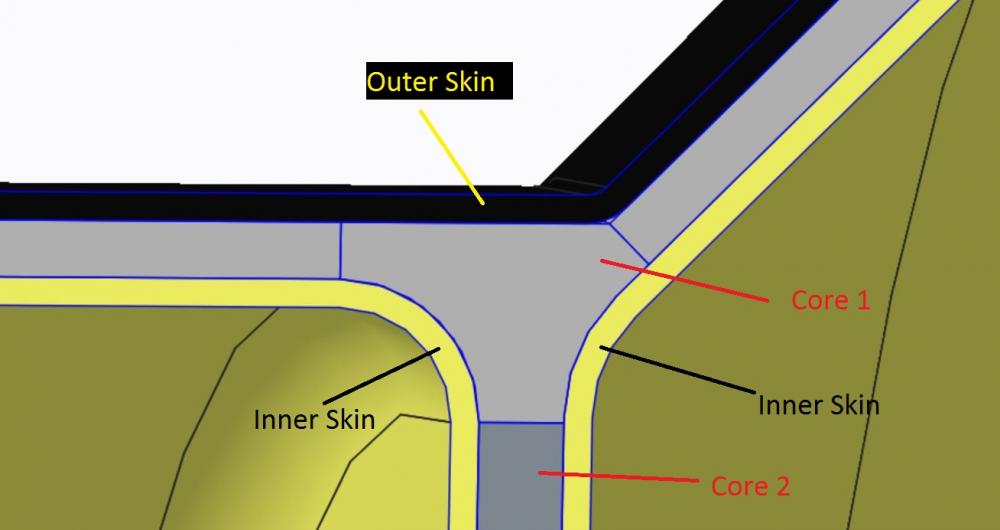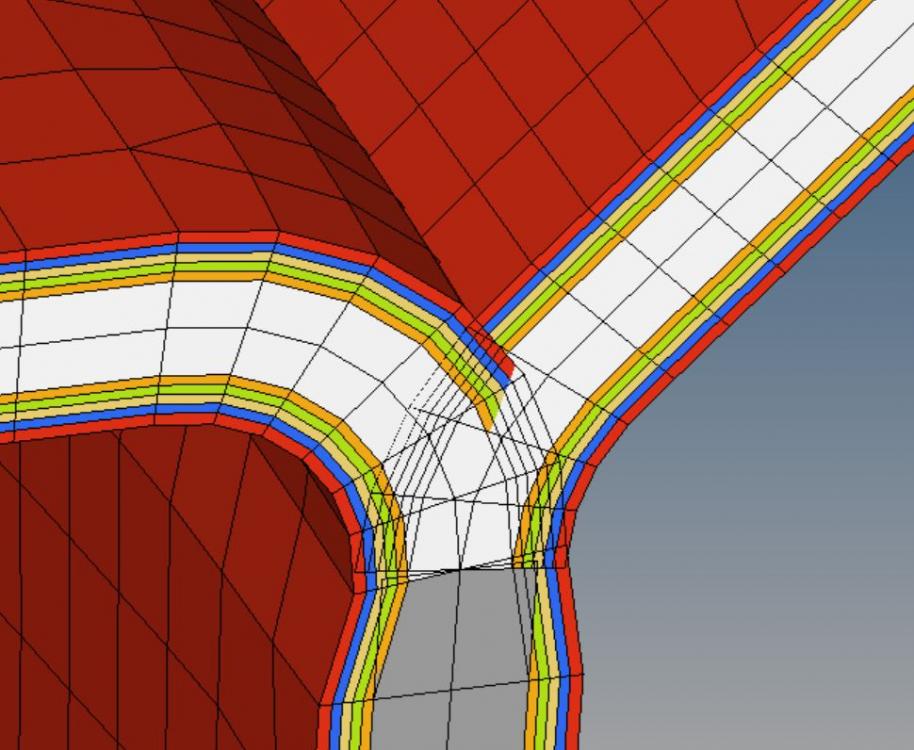Hi all,
the part is going to be a composite part therefore I imported a middelsurfaced model.
As I'm working with HyperMesh for the first time, my first goal was to get to know the software and creating a lay-up so I did some tutorials as well especially those for composites. Now I have tricky problem as it is not simple shape that I want to simulate.
My problem is a T-junction, the lay-up ist not symetric due to that. The outer skin shall go over the junction and is sperated by a core from the two inner skins (picture 1).
How can I set up an area like this in general? How can I manage to get a skin over the junction, how can I avoid overlapping cores that come together? How to handle more complex shapes of cores that are not easily symmetric?
My current solution is shown in picture 2: smear core, overlapping cores and skins that cut though those - quite ugly.
Maybe the middlesurfaced model is the wrong appoach?
I really appreciate your help ;D
<?xml version="1.0" encoding="UTF-8"?>
<?xml version="1.0" encoding="UTF-8"?>